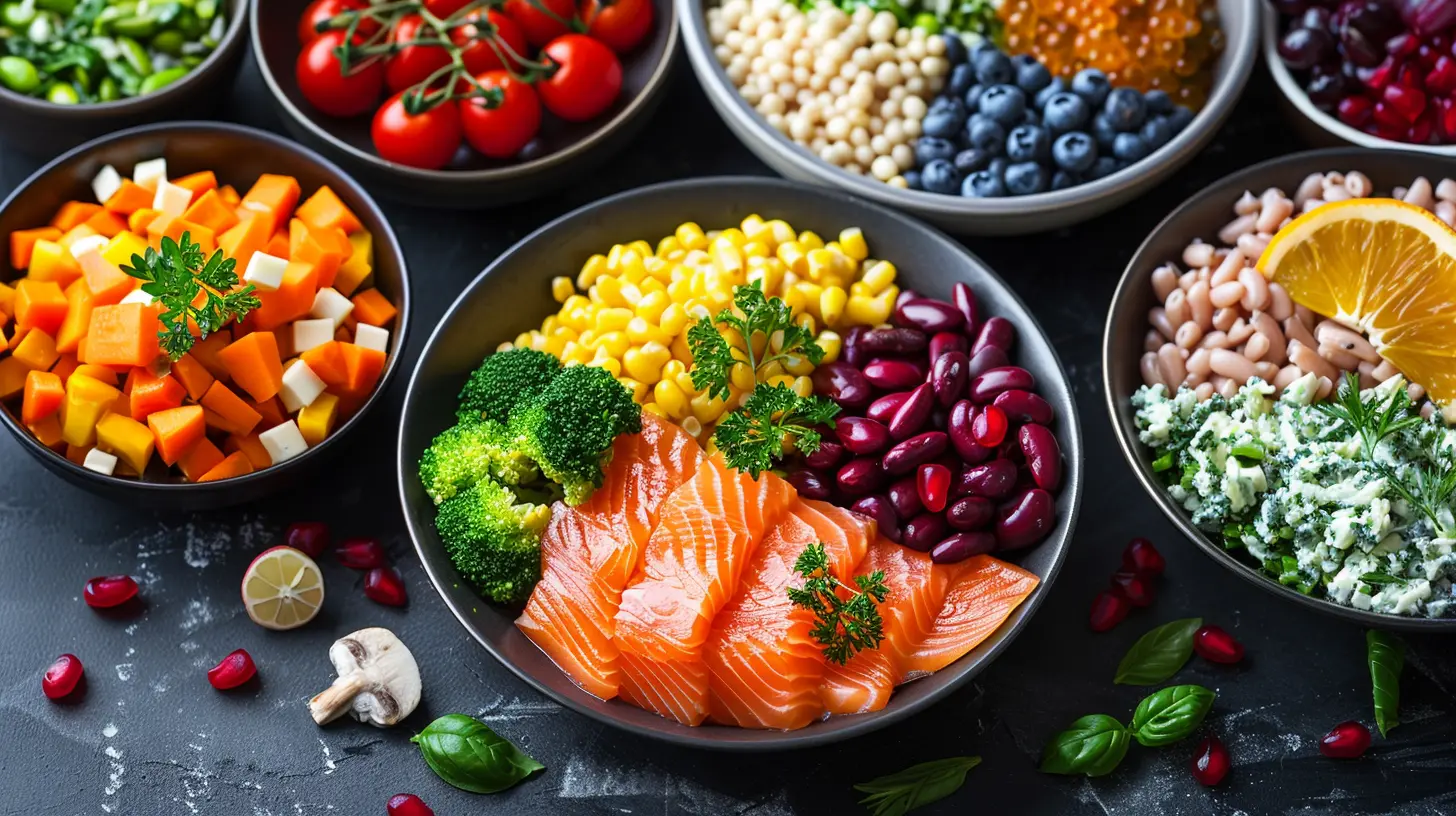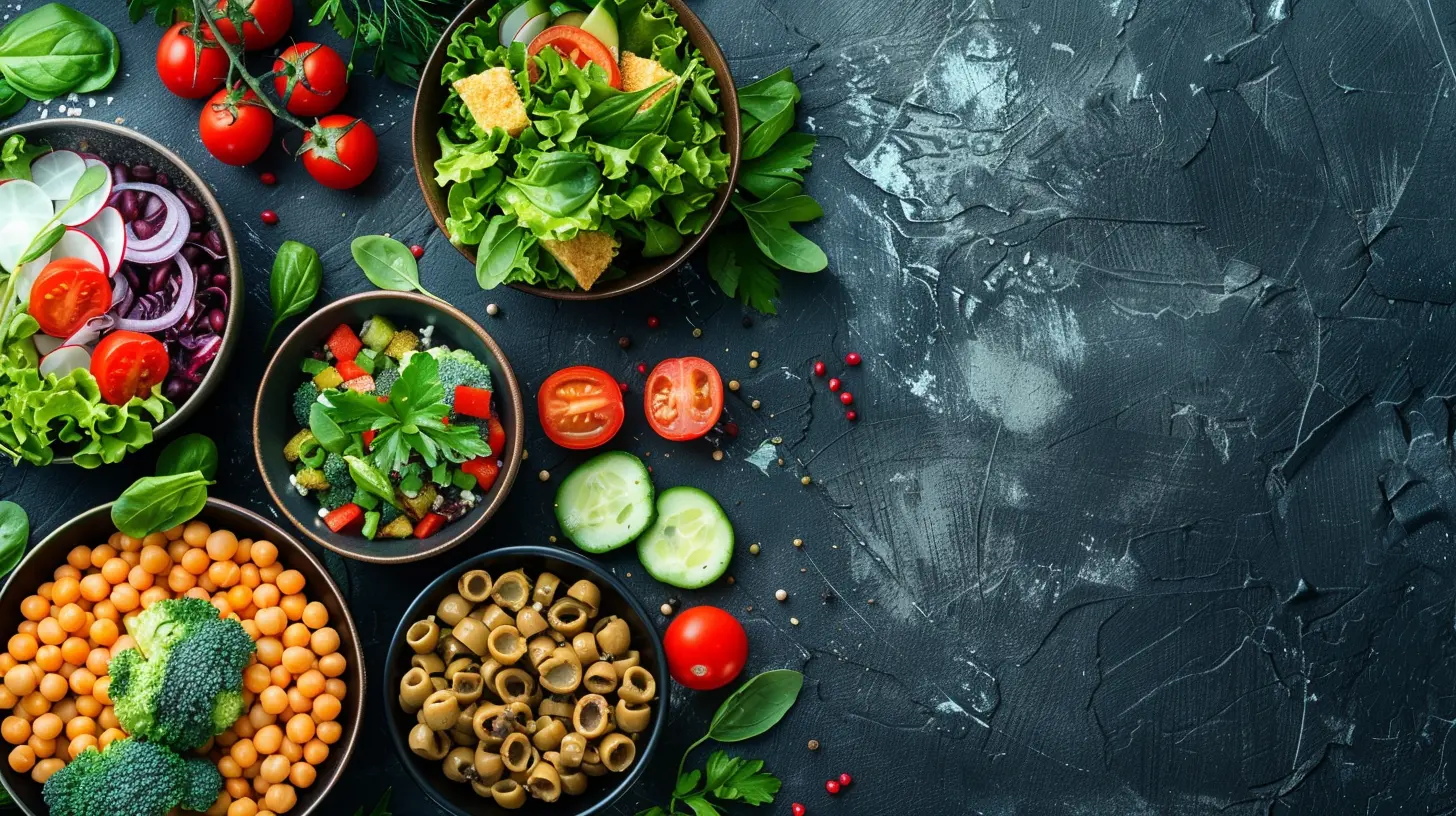How to Create a Diabetes-Friendly Meal Plan
7 May 2025
Managing diabetes isn't just about cutting sugar or skipping dessert—it's about reshaping your relationship with food. And let’s be honest, that can feel a little overwhelming at first. But don’t worry. Building a diabetes-friendly meal plan doesn’t have to be boring or confusing. With the right steps, a sprinkle of planning, and a pinch of creativity, you can enjoy delicious meals that keep your blood sugar in check.
In this guide, I’ll walk you through the process of creating a diabetes-friendly meal plan—from understanding your body's needs to filling your plate with nutrient-dense foods that taste amazing. Ready to take the guesswork out of mealtime? Let’s get started!
Why a Diabetes-Friendly Meal Plan Matters
Before we jump into the “how,” let’s talk about the “why.”If you have diabetes, whether it’s Type 1, Type 2, or even prediabetes, what you eat has a direct effect on your blood sugar levels. Think of food as fuel. The right kind keeps your engine running smoothly; the wrong kind can cause it to sputter or overheat.
A well-balanced meal plan helps:
- Maintain stable blood sugar levels
- Control weight
- Reduce the risk of heart disease
- Increase energy and overall mood
And guess what? A diabetes-friendly plan is actually just a healthy eating plan—one that even folks without diabetes could benefit from.
Step 1: Know Your Nutrients
You don’t need to be a nutritionist to get this part right. Let’s break it down simple.Carbohydrates: Watch Your Portion, Not Your Life
Carbs are the biggest influencer of blood sugar. But cutting them completely? That’s like throwing out your comfy jeans just because they got a stain—unnecessary!Focus on:
- Complex carbs: Think whole grains (like brown rice, quinoa, and oats), legumes, and starchy veggies
- High fiber foods: These slow down sugar absorption, keeping your blood sugar more stable
- Limit refined carbs: White bread, pastries, and sugary snacks… yeah, they’re the sugar-crash culprits
📌 Tip: Aim for 45–60 grams of carbs per meal (or as recommended by your doctor or dietitian).
Proteins: Your Blood Sugar’s Best Friend
Protein doesn’t spike your blood sugar like carbs do. It’s your ally at every meal.Great options include:
- Lean meats (chicken, turkey)
- Fish (especially fatty ones like salmon)
- Eggs
- Tofu or tempeh
- Low-fat dairy
- Beans and lentils (bonus—they also have fiber)
Including protein also helps you stay full longer. Win-win, right?
Fats: Don't Fear the Fat
Not all fats are evil! In fact, healthy fats can improve insulin sensitivity and keep your heart healthy.Go for:
- Avocados
- Nuts and seeds
- Olive oil
- Fatty fish
Avoid or limit trans fats and saturated fats (looking at you, fast food).
Step 2: Understand the Plate Method
This is probably the easiest (and most visual) way to build a balanced meal.Think of your plate as a pie chart:
- 🥦 Half the plate: Non-starchy vegetables (like spinach, bell peppers, broccoli, cucumbers)
- 🍗 One-quarter: Lean protein
- 🍠 One-quarter: Whole grains or starchy veggies (like sweet potatoes or brown rice)
Add a serving of fruit or dairy on the side if you like, and don’t forget water or an unsweetened drink to wash it all down.
Step 3: Time Your Meals Right
Meal timing matters. Why? Because going too long without eating—or eating too often—can throw blood sugar levels on a rollercoaster ride.Stick to a Schedule
- Eat every 4 to 5 hours to maintain energy and blood sugar- Don’t skip meals, especially breakfast
- Snack smart if needed—nuts, yogurt, or a small apple can do wonders
Think of your body like a campfire. You need to toss on a few logs every few hours to keep the flame steady.
Step 4: Plan Ahead (Meal Prep = Your Secret Weapon)
Let’s face it—when you're starving and nothing is ready, it's way too easy to hit a drive-thru or raid the cookie jar. Planning ahead saves your blood sugar and your sanity.How to Meal Prep for Diabetes
- Plan meals for the week: Include breakfast, lunch, dinner, and snacks- Batch cook proteins and grains: Roast a few chicken breasts, cook up a pot of quinoa
- Chop veggies in advance: Store them in containers for easy access
- Pack your lunch: Saves money and keeps you in control
- Freeze leftovers: Easy dinners on busy nights
Even if you only prep for 2-3 days, that’s a great start.
Step 5: Read Labels Like a Pro
Let me tell you a secret: food packaging lies. “Healthy” and “low-fat” don’t always mean friendly.What to Look For:
- Serving size: The nutrition info is per serving, not per package- Total carbs: Don’t just look at sugars—total carbs include starch and fiber
- Fiber: More is better
- Added sugars: Watch for sneaky names like corn syrup, cane sugar, or anything ending in “-ose”
- Unhealthy fats: Avoid trans fat and keep saturated fat low
Reading labels gets easier with practice. Soon you'll be a grocery store detective.
Step 6: Hydration—Don’t Sleep on It
Water is a big player in blood sugar control. Dehydration can cause your blood sugar to spike, so don’t ignore your fluid intake.Stick to:
- 💧 Water (add lemon or cucumber slices for flavor)
- 🍵 Unsweetened herbal teas
- ☕ Coffee (skip the sugar and syrups)
Skip (or seriously limit):
- Sugary sodas
- Energy drinks
- Sweetened teas
- Fancy coffee drinks loaded with sugar
Step 7: Make Room for Treats (Yes, Really)
Here’s the thing—completely banning treats often backfires. Instead, learn how to incorporate them mindfully.- Small portions satisfy without sabotage
- Pair sweets with fiber or fat to slow sugar absorption
- Make smart swaps: Dark chocolate over milk chocolate, fruit-based desserts over pastries
And always savor every bite. No guilt needed.
Step 8: Keep a Food Journal
Don’t roll your eyes—this isn’t about perfection. It’s about awareness.Tracking helps you:
- Spot patterns (like blood sugar spikes after certain foods)
- Stay accountable
- Celebrate progress
Use a notebook, an app, or even your Notes app on your phone.
Sample Diabetes-Friendly Meal Plan
Let’s bring it all together! Here’s a one-day sample plan you can tweak based on your preferences and calorie needs.Breakfast
- Scrambled eggs with spinach and tomatoes- Whole grain toast
- Half a grapefruit
- Black coffee or herbal tea
Snack
- Greek yogurt (unsweetened) with chia seedsLunch
- Grilled chicken salad with mixed greens, cucumbers, bell peppers, olive oil, and balsamic vinegar- A small apple
Snack
- A handful of almondsDinner
- Baked salmon- Roasted sweet potatoes
- Steamed broccoli
- Sparkling water with lime
Dessert (optional)
- 1 square of 70% dark chocolateSee? Balance, flavor, and variety—all in one day.
Final Thoughts: It’s a Lifestyle, Not a Life Sentence
Creating a diabetes-friendly meal plan isn’t about dieting—it’s about nourishing your body in a way that makes you feel good inside and out. It’s not about giving up your favorite foods but learning how to enjoy them smarter.Start with small changes. Experiment. Be kind to yourself on the tough days. Over time, you’ll find your rhythm and your plate won’t just be diabetes-friendly—it’ll be delicious, empowering, and uniquely yours.
all images in this post were generated using AI tools
Category:
DiabetesAuthor:

Laurie Barlow
Discussion
rate this article
3 comments
Starla Barron
A well-crafted meal plan is essential for diabetes management; however, personalization and flexibility are key to long-term success and sustainability.
May 14, 2025 at 2:31 AM

Laurie Barlow
Thank you for your insight! Personalization and flexibility are indeed crucial in creating sustainable meal plans for effective diabetes management.
Giovanna McVaney
Creating a diabetes-friendly meal plan is not just about counting carbs; it’s a journey towards understanding food's relationship with our body. Each meal can empower us to make healthier choices, fostering a deeper connection between nourishment and well-being while embracing the intricacies of our individual needs.
May 10, 2025 at 3:43 AM

Laurie Barlow
Thank you for highlighting the importance of understanding our food choices! Empowering ourselves with knowledge is key to creating effective meal plans that support our health.
Arwenia McGrady
This article offers practical tips for crafting a diabetes-friendly meal plan! Incorporating whole foods, balancing nutrients, and monitoring portion sizes are essential steps. Understanding how different foods affect blood sugar can empower better choices for health and well-being.
May 8, 2025 at 3:34 PM

Laurie Barlow
Thank you for your insightful comment! I'm glad you found the tips helpful for creating a diabetes-friendly meal plan. Empowering readers with knowledge about food choices is key to better health!



